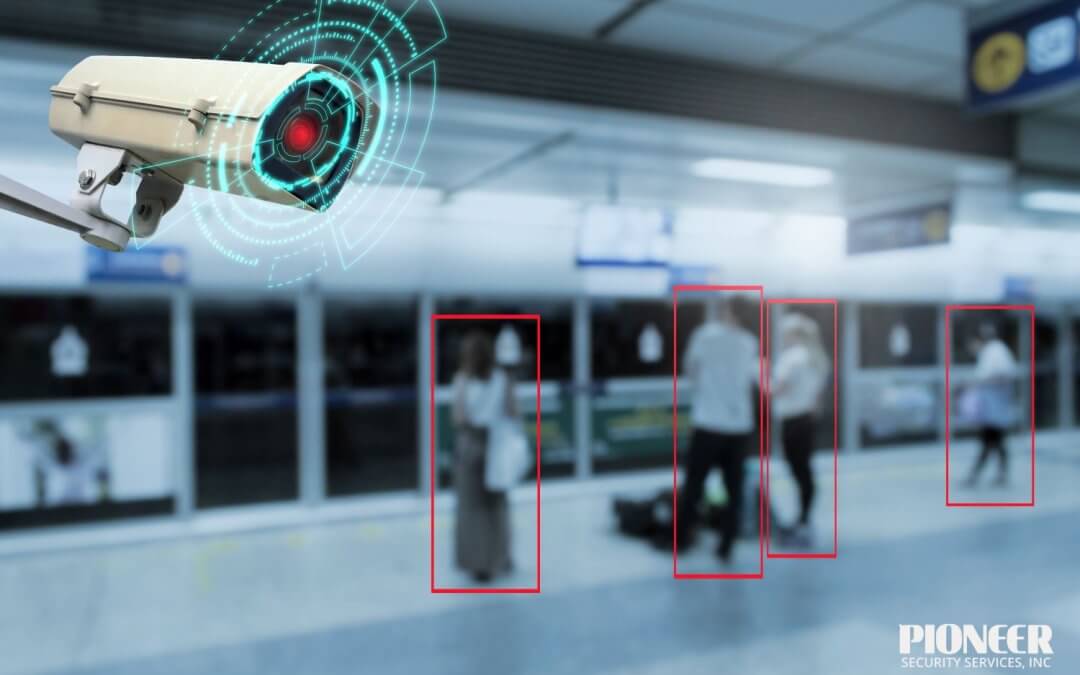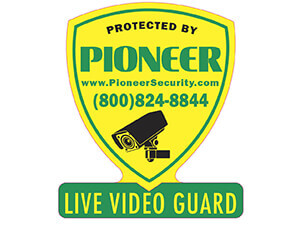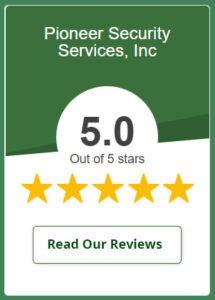The Power of Proactive Security
Traditional commercial property security reacts to incidents after they occur, but live video guard systems prevent crimes before they escalate. By integrating AI-powered monitoring, real-time alerts, and instant intervention, this technology transforms surveillance into a powerful crime prevention tool.
Consider a would-be burglar approaching a warehouse at 2 AM. Traditional cameras record the break-in for later review, after damage is done. With live video guard, AI analytics detect suspicious activity instantly, a trained specialist activates strobe lights and issues a live audio warning, and police are dispatched before the criminal reaches the door. The result is proactive security: crime prevented, assets protected, and operations uninterrupted.
This shift from reactive to proactive security distinguishes live video guard from guards and standard cameras, which focus on response rather than prevention. From retail theft to construction site vandalism, live video guard redefines commercial property security across industries.
This article explores how live video guard leverages real-time detection, AI analytics, and rapid response to create robust crime prevention. Through real-world examples, data, and implementation steps, you’ll see why this technology is essential for protecting your property.
The Science Behind Real-Time Crime Prevention
AI-Powered Detection
Live video guard combines artificial intelligence and human expertise for proactive security. Deep learning algorithms, trained on millions of data points, distinguish normal activity from threats:
- Motion Analytics: Software classifies movement, flagging anomalies like lingering near entrances at odd hours.
- Behavioral Recognition: AI analyzes body language to identify suspicious actions, such as testing door handles.
- Thermal Imaging: Heat signatures detect intruders in darkness or through obstructions, eliminating blind spots.
Human Verification
Trained specialists verify AI alerts to reduce false alarms, ensuring:
- Accuracy: Fewer false positives than motion-only systems.
- Context: Humans distinguish legitimate activity (e.g., delivery drivers) from threats.
- Instant Response: Specialists trigger alarms, issue audio warnings, or contact authorities.
Predictive Capabilities
By analyzing historical crime data and patterns, live video guard anticipates risks:
- Increased surveillance during high-risk times based on past incidents.
- Preemptive alerts for loitering near sensitive areas like ATMs.
This integration of AI and human oversight creates a dynamic crime prevention system that adapts to evolving threats, reducing incidents and enhancing response.
Live Video Guard in Action: 3 Ways It Stops Crimes Before They Escalate
Voice-Activated Deterrence
Scenario: A masked individual approaches a closed retail store at 2 AM with a crowbar.
Response: AI detects motion near the rear entrance, a specialist verifies the threat, and a loud audio warning states, “You are being recorded; authorities have been alerted.”
Result: Pioneer Security Services reports that 83% of intruders flee upon hearing warnings, preventing break-ins and costly repairs without confrontation.
Behavioral Detection
Scenario: A vehicle circles a corporate parking lot repeatedly for 30 minutes.
Response: AI flags the loitering as suspicious, cross-references the license plate (if available), and alerts security to investigate or dispatch patrols.
Result: Potential thieves abandon the site, deterred by early detection unavailable with traditional cameras.
Weapon Recognition and Lockdowns
Scenario: An armed individual enters a hospital emergency room.
Response: AI detects a firearm via shape and metal detection, triggering automatic door locks, real-time police video feeds, and silent staff alerts.
Result: Authorities respond faster, containing the situation before violence escalates. Hospitals report a 67% reduction in weapon-related incidents with live video guard.
Why It Matters
Live video guard delivers:
- Cost Savings: Preventing one break-in saves thousands in losses.
- Safety: Non-confrontational deterrence protects people and property.
- Scalability: Effective for small businesses or large campuses.
By disrupting threats early, live video guard transforms crime prevention from damage control to proactive defense.
The Data Doesn’t Lie: Stats That Prove Effectiveness
Response Time
Live video guard accelerates response:
- Traditional guard-dispatched police calls average 8-12 minutes (FBI Uniform Crime Reporting, 2023).
- AI-triggered alerts with verified video enable police to arrive 3-5 minutes faster (Pioneer Security Services case studies).
Financial Impact
Live video guard offers cost efficiency:
- Traditional guards cost $35,000-$60,000 annually per officer (Bureau of Labor Statistics, 2024).
- Live video guard reduces costs by 40-60% while providing 24/7 coverage (Security Management Magazine, 2024).
- Preventing one warehouse theft saves over $50,000 in losses and insurance costs.
These statistics demonstrate that live video guard delivers faster, more cost-effective crime prevention for businesses.
Industries Revolutionized by Live Video Guard
Retail: Combating Theft
Problem: Retailers lose $112.1 billion annually to shrinkage, including theft, with organized crime targeting high-value goods (National Retail Federation, 2023).
Solution: AI identifies shoplifters via facial recognition (where legally compliant) and issues audio warnings to deter raids, enhancing crime prevention.
Construction: Protecting Equipment
Problem: Construction sites lose up to $1 billion yearly to equipment theft (National Equipment Register, 2023).
Solution: Thermal cameras and geo-fenced alerts detect intruders and unauthorized asset movement, strengthening proactive security.
Healthcare: Securing Pharmacies
Problem: Hospital pharmacies face significantly higher burglary rates than other sectors (Journal of Healthcare Protection Management, 2024).
Solution: Behavioral analytics and weapon detection lock down sensitive areas, ensuring commercial property security.
Residential: Enhancing Safety
Problem: Approximately 34% of burglars enter through unlocked doors or windows (Bureau of Justice Statistics, 2021).
Solution: Integration with doorbell cameras and community-wide monitoring improves crime prevention.
Why It Works
Live video guard adapts to sector-specific risks, scales with business needs, and deters crime cycles, delivering tailored proactive security across industries.
Common Myths Debunked: Separating Fact from Fiction About Live Video Guard
Myth 1: Too Expensive
Reality: Live video guard offers cost savings:
- Traditional guards cost $35-$60/hour ($300,000+/year per site).
- Live video guard costs $50-$150/month per camera, with a retail store avoiding $200,000 in theft losses annually (National Retail Federation, 2023).
Myth 2: Less Reliable Than Humans
Reality: AI and human verification ensure accuracy:
- Traditional sensors have 95-99% false alarms, versus <5% for AI analytics.
- AI detects threats 300-500 milliseconds faster than guards (Security Journal, 2024).
Myth 3: Privacy Concerns Outweigh Benefits
Reality: Live video guard prioritizes privacy:
- Footage uses AES-256 encryption, matching banking standards.
- Systems comply with GDPR/CCPA, avoiding facial recognition where prohibited.
- Access is restricted with audit logs.
These truths dispel outdated perceptions, proving live video guard is cost-effective, reliable, and privacy-conscious for proactive security.
How to Implement Live Video Guard for Your Property: A 4-Step Blueprint
Step 1: Vulnerability Assessment
Conduct a security audit to identify high-risk areas (e.g., blind spots, entry points) and review past incidents. Providers like Pioneer Security Services offer site evaluations to pinpoint vulnerabilities using thermal mapping for traffic patterns.
Step 2: Camera Placement Strategy
Maximize coverage:
- Cover all entry/exit points with wide-angle lenses.
- Monitor high-value areas like cash registers or equipment yards.
- Install cameras 8-12 feet high for clear recognition and tamper resistance.
Use a mix of PTZ, 4K fixed, and thermal cameras for optimal proactive security.
Step 3: System Integration
Connect Live Video Guard to existing systems:
- Link to door locks and alarms for triggered lockdowns.
- Replace motion sensors with AI-driven alerts.
- Sync with lighting or sirens for threat response.
Step 4: Staff Training
For hybrid models, train staff on:
- Response protocols for AI alerts versus physical intervention.
- Breach simulation drills to test reaction times.
- Feedback loops to refine AI detection rules.
Implementation Timeline
- Assessment: 1-2 days (risk report and camera plan).
- Installation: 1-7 days (hardware setup and testing).
- Integration: 1-3 days (system synchronization).
- Training: 1 day (staff competency).
This structured approach ensures scalable crime prevention for any property.
The Future of Crime Prevention is Here
Live video guard revolutionizes commercial property security by preventing crimes before they occur. AI-powered detection, human verification, and proactive intervention deliver unmatched crime prevention, surpassing traditional methods.
Key Advantages:
- 24/7 vigilance without blind spots or fatigue.
- Instant alerts reducing police response times.
- 40-60% cost savings compared to guards.
- Scalable protection for any property size.
- Deterrence that stops most intruders.
Contact Pioneer Security Services at for a customized proactive security assessment and demo to protect your property with live video guard.



